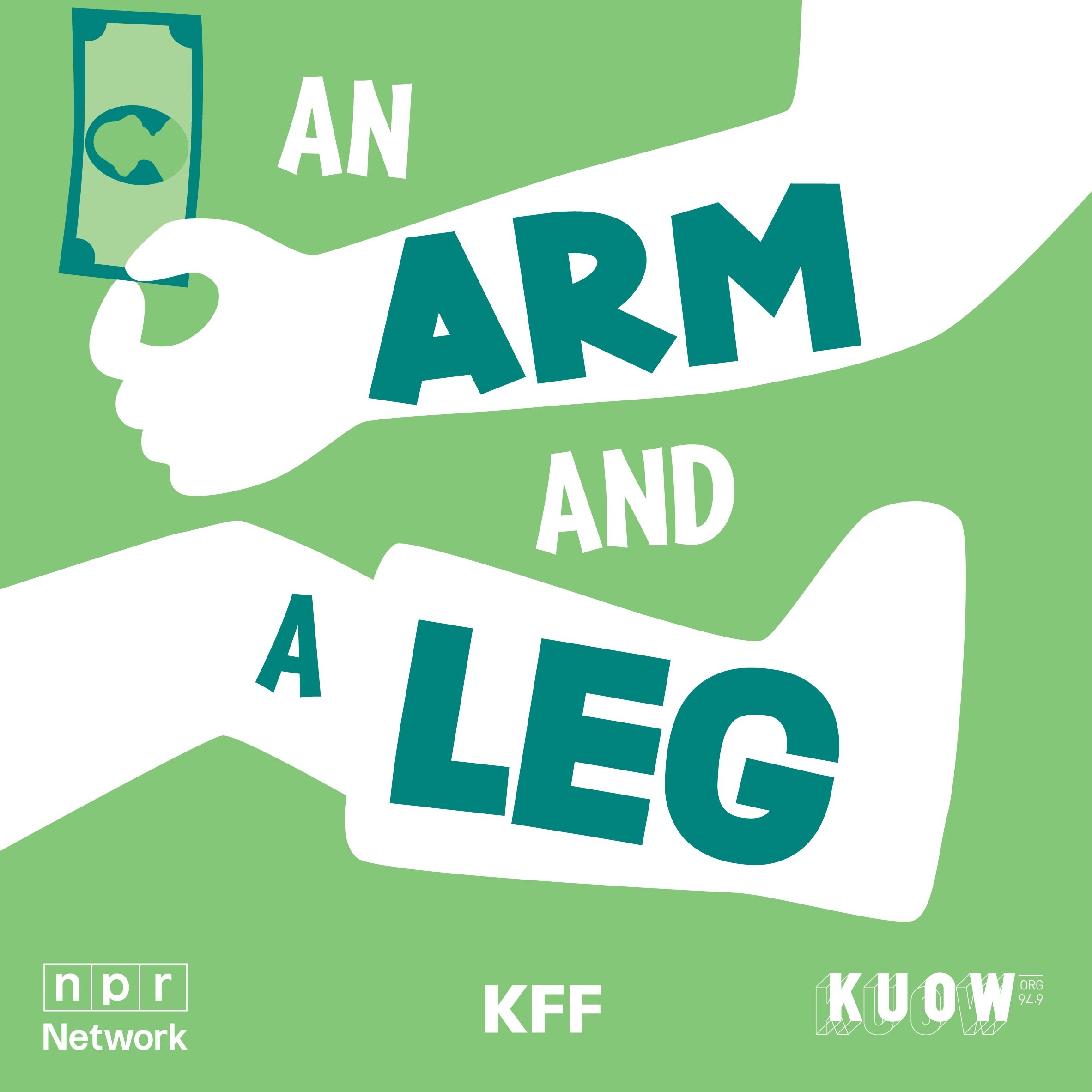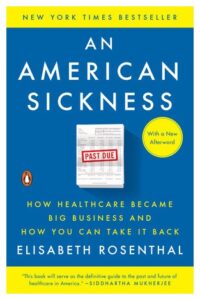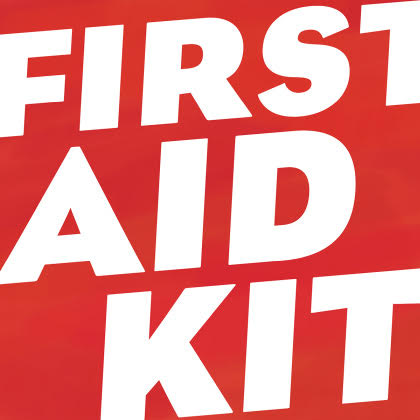Please note that this transcript may include errors.
Dan: Let’s compare going to the doctor— or, god forbid, the hospital— to shopping for a gallon of milk. When you’re in the store to get some milk, the price is marked on the shelf— maybe there’s a couple of brands. You pick the one you want, pay on your way out.
Jenny Gold: Now with healthcare, The analogy would be, you go to the store for a gallon of milk. You have no idea what it costs. You don’t know what it costs at that store compared to other stores. You walk into a random store, pick out a gallon of milk, go through check-out. You still don’t know what it costs. You give them your credit card information and then a few weeks later you get a bill telling you how much they charged you for it.
Dan: That is super crazy.
Jenny Gold: Yes.
Dan: That’s Jenny Gold. She’s an investigative reporter who writes about health care. In this episode Jenny’s reporting will show us how insurance companies help keep those prices hidden— and keep them high.
This is “An Arm and a Leg”— a show about the cost of health care. I’m Dan Weissmann.
Blake Valkier’s knee was killing him. Like, he couldn’t sleep at night. He says he could feel his heartbeat in his femur. The knee was twice its normal size.
Blake: People that have had knee injuries fully understand the feeling of it. It just feels like wobbly …. So there’s the pain, but there’s also that feeling like it could give out on you at any second.
Dan: Doctors at a local hospital told him he needed a brace on his leg— and they sent him downstairs to get one. BAM. This thing LOCKS his knee into place.
Blake: It’s a wonderful device. I love it. I call it the Iron Maiden.
Dan: He went in to work that day, a happy man.
Blake: And I was thinking, I wonder what they’re going to charge the insurance company for this brace. And I looked at the side, and I’m like, “Hey I can google it,” and I google it, and…
Dan: 150 bucks. He figures there’ll be a little markup.
Blake: I kind of put it in the back of my head, enjoyed the brace as much as possible. Um, yeah. And then the bill came.
Dan: And what did it say?
Blake: Fourteen hundred dollars.
Dan: Whoa. But this was an insurance statement from Blue Cross, and it said: Hey, Blake, we knocked this crazy 1400 dollar bill down for you. Way down. We told them, make it 529.
Which— because Blake hadn’t paid his deductible for the year— was on him. He was going to pay 529 bucks…
Blake: For a brace I could’ve walked home— well, hobbled home— and googled and had it in house the next day for $150, brand new.
Dan: And you double and triple check that. This was the exact same exact same exact
Blake: Went right to the manufacturer’s website, looked at where I could buy it. Um, yeah, no, it was the, it’s the exact same brace from the exact same manufacturer. Not Refurbish, not reused. Um, nothing.
Dan: And yeah, Blake has shown me his insurance statement,and the bills he got: This does not include a charge for FITTING the brace, or the doc’s consultation. None of that.
And Blake’s obviously isn’t the MOST outrageous version of this story. That’s kind of the point. It’s a super-everyday story, really.
And it raises this really interesting question:
Why would Blue Cross say 529 was an OK price for this thing?
Seriously, why? If Blake had met his deductible for the year, THEY’D be paying that.
For a hundred-fifty dollar device.
Why would they allow for this? I mean, it’s not that I’m worried for them, exactly. (And by the way, they never got back to me.)
But what is the deal?
Insurance companies say all the time— in statements like the one they sent Blake— that they’re knocking down prices.Which makes sense— they’re buying in bulk.
But it turns out: Really not. Actually, Insurance companies CONTRIBUTE to crazy prices.And ultimately, we end up with the bill.This brings us back to Jenny Gold and her reporting.
Jenny Gold: The first thing I did was, I called the insurance companies.
Dan: Jenny looked at what insurance pays doctors for delivering a baby in the Bay Area.What she found was: Insurance DOES NOT pay all docs the same amount for this service. Not even close.
Independent doctors, who own their own practices, get like 2400 bucks. Doctors who work for Stanford medicine get paid more than double that: 5200.
And doctors who work for the University of California get more than triple: Eight thousand dollars.
This sounds like some insidery stuff— what insurance companies pay— but stay with me. It comes back to what all of us pay, including Blake and his leg brace.
Jenny talked with Sarah Azad, an obstetrician in Mountain View, California. Sarah was totally inspired by her mom, who also was an obstetrician.
Sarah Azad: From the time we were young, my mom’s patients loved her. She was a part of their lives. That’s just always how I’ve seen medical care.
Dan: So, Dr. Azad runs the same kind of practice her mother did: Small, independent.
But, she’s got a problem: after being in practice for eight years, she’s never been able to get an increase in the fee she gets from insurance.
Jenny Gold: And meanwhile her rent is going up. She asked to institute electronic health records. Things cost a lot of money. Running a practice is really expensive.
Dan: The rent increase alone is no joke—Dr. Azad told Jenny it was like three percent a year. So if she’s been there for eight years— and if this calculator I found on google is right— that means her rent is more than 25 percent higher than when she started.
She tells Jenny when she asks for a raise, the insurance companies say, tough luck.
Jenny Gold: Well basically what they told her is, you have less than two percent of market share in this area, so we have no reason to increase your rates. Take us or leave us if you don’t want to take us as an insurance— fine, don’t: We don’t need you. These insurance companies simply can’t say that to Stanford or another large hospital system because they have a much larger market share.
Dan: Ah-HAH. This is why the insurance companies don’t hold prices down: THEY CAN’T. Not when they’re negotiating with big players.
Right? Because, for an insurance plan to be attractive, it’s got to actually include the doctors people go to. In the Bay Area, that means the biggest hospital systems— like Stanford and the University of California.
And so in negotiations between Stanford Medicine and the health insurance company, when Stanford says, “Yo dude, this is what it costs to deliver a baby here— it’s more than five grand…” the insurance company has every reason to say, like, “Yah, Mmmm—ok.”
And this whole setup— paying small players less and big players more— actually keeps prices ratcheting up.
We’ll have an example of how that works, right after this.
OK, here’s an example from Jenny Gold’s reporting about how insurance companies — and how they pay small players less than big ones — keep prices climbing for everyone.
Jenny talked with another obstetrician— Ken Weber, who works across the street from Sarah Azad and admits patients to the same hospital. He operated an independent practice for 25 years, and got increasingly frustrated.
And keep getting the shaft from insurance. So he sold to Stanford.
Jenny Gold: Yeah, this is absolutely fascinating. He’s now an employed doctor. He still works in the same building. He probably still has pretty much the same patients. He still delivers his babies in the same hospital as he used to, but his services cost twice what they used to cost for insurance companies.
He actually is not making any more money than he used to do. That means that extra money, that extra $2,500 per delivery that he’s charging, that’s entirely going to Stanford. That’s going to the hospital system.
Dan: Yeah. Weber told Jenny he’s not getting more money. Stanford’s now providing the record-keeping system— and other hassles of running a practice.
The new setup is OK, for him. But something is off…
Kenneth Weber: It doesn’t make a lot of sense to me from the insurance company’s standpoint, because they’re losing all these doctors to the bigger groups and having to pay more.
Dan: In fact, the more docs sell to the big players, the more leverage those big players have when they negotiate with insurance companies.
This comes back to the same question we started with, with Blake’s leg brace: Why don’t insurance companies work harder— and think a little smarter— to save themselves some money? And Jenny Gold has the answer:
Jenny Gold: It’s not like insurers end up paying the higher costs out of their own pockets. They’re passing those costs along to all of us in the form of higher premiums and they can do that. They can jack up the premiums.
Dan: So insurance companies don’t have to work hard to keep prices down because they’re not the ones paying for it. We are. Me and you. And if it’s not a higher premium, it’s a higher deductible.
Jenny Gold: We are asking patients to have more and more financial skin in the game when it comes to their health care — because suddenly they have these very high deductibles. I mean deductibles can be up to $10,000 for a family. It’s like they’ve got skin in the game and that they are paying much higher prices, but they’re unable to control those costs.
Dan: It sounds a lot like Blake’s leg brace. I tell all this to Blake, and he’s kind of philosophical about it.
Blake: Basically it gets passed down to the last person, the weakest person in line. That’s the sad part
Dan: On the other hand, he says: He’s learned a valuable lesson:
Blake: Next time and instead of buying that Bryce downstairs next to the candy shop, I think I’m just going to go home and buy it on Ebay. Even if I have to walk in and say, can I take a look at what I’m going to be wearing? And I look at it and then I walk out, maybe they won’t charge me. Just get the model number off the bag.
Dan: Yeah. But it takes guts, right? That feels, that feels scary, right?
Blake: You know, lesson learned. Next time I’ll do that. Hopefully I’ll never be in that situation again, but if I know someone who is, I will absolutely say find out what they were going to put on you and go home and buy it just and buy it at a fraction of the cost. So, now I know. Lesson be learned.
Dan: OK. That’s a take-away we can all benefit from: Shop around. Sometimes that works. But mostly, with health care we are not talking about things you can get at Amazon. And here is where Jenny Gold’s reporting shows us a whole nother side of this problem.I mean, when you need a doctor, or a hospital, price may not be the only thing you want to think about. But if you WANT to think about the price at all?
Jenny Gold says good luck: Even just FINDING OUT the price is a heavy lift. All of this information— like the rates doctors actually get paid — is hidden.
Jenny Gold: There are gag clauses in the negotiations between insurers and hospitals or doctors and it’s really hard as a consumer to find out what the actual cost is likely to be for you.
Dan: To get the data for her story, Jenny had to look hard, and get lucky. After a LOT of scratching around— she called insurers (no dice). She tapped her network on Facebook. Finally, she found a company with a big database that was willing to share some data.
But there were missing pieces. So Jenny needed ANOTHER database—this one from the government— and help from a smart colleague to match everything up. It took weeks.
Jenny Gold: It was so much more work than it should ever be. And it’s so much more work than a consumer could ever do. This is my job. I do investigative reporting, but for any regular consumer it would be way too high a burden, especially if they’re sick.
Dan: Remember how Jenny compared health care to shopping for milk? When we shop for things like milk, we know what the price is BEFORE we buy. And we can shop around.
But not with health care.
Thanks, in large part to insurance companies. Thanks, guys: You’re keeping prices hidden AND you’re keeping them high.
Jenny Gold: It’s HARD to be a smart shopper about health care. It just is.
Dan: How does this job make you feel?
Jenny Gold: Like we’ve done something very, very wrong in this country with health care.
Dan: Next time on An Arm and a Leg: of course insurance companies aren’t the only player in this game that keeps making prices crazier. How about… hospitals?
Sarah Kliff has been reporting on health care for a long time— first at the Washington Post, then at Vox. She knows about as much as anybody about our health care system.
And then she got an email from a reader who wanted to know why the local emergency room had charged him six hundred and twenty-nine dollars… for a band-aid. He sent her the bill.
Sarah Kliff: I mean, it’s like, so opaque: like if you look at this bill, it says reason code mg like, what does that mean? If it says service code C-One, like I, I, I write about healthcare for living. I don’t know what reason code mg Ids and service code c one are. Um, yeah, this was all totally news to me.
Dan: She started finding out— and started asking more readers for their ER bills. A thousand ER bills later, she tells us what she’s learned.
That’s next time, on An Arm and a Leg.
Meanwhile, here is a voice memo from Rebecca in the New York City area that’s both a story and a tip:
Rebecca: I was diagnosed with breast cancer in August, which is when I generally schedule my annual mammogram getting the diagnosis of cancer in August led to surgery in October and then starting radiation therapy in January. And like most Americans I had a really high deductible $6,000. And then a couple months into treatment, the clock rolled over. It was January first I passed go and it was another $6,000 out of pocket.
I think he would be doing your listeners a tremendous, tremendous service if you told them to schedule their annual checkups and pap smears and mammograms and everything as close to the turnover of their policy year as possible because they won’t get nailed with a double deductible. [[CUT? Sure Shit happens and you can get sick, but if you’re going to go through routine diagnostic tests, do it as close to the beginning of your coverage period as possible
Dan: Rebecca, thanks for that.
I’m getting SO many stories and so many tips— and so many kind words, which is also really, really nice. And I am learning so much. It’s going to take me a while to absorb all of it. Meanwhile, please keep them coming!
And… take care of yourself.
This episode was produced by me, Dan Weissmann. Our editor is Whitney Henry-Lester, our consulting producer is Daisy Rosario. Our music is by Dave Winer. Adam Raymonda is our audio wizard.
Thanks this week to Jenny Gold. Jenny works for Kaiser Health News— which, I should mention, is not associated with Kaiser Permanente health care. It’s part of an independent foundation that basically runs on an endowment set up by Mr. Kaiser, 50 years ago.
An audio version of her story ran on the public-radio show Marketplace. Thanks to Kaiser Health News, and to Marketplace for the story and for the tape of Sarah Azad and Ken Weber.
You’ll find links to Jenny’s original story on our website— or in our newsletter! You can sign up for that at arm-and-a-leg-show, dot com, slash, newsletter.
Thanks also to our new backers on Patreon! Pledge two bucks a month or more to this show, and you get a shout-out in this spot.
Thanks this week to Paul Brown, Andrew Huff, John and Sarah-Anne Schumann, Ethan Heitner, Tim Sullivan, Jesse Dukes, and Gigi.
Thank you!
Thanks for spreading the word about the show, and thanks for listening.
And thanks to Chicago music legends Mucca Pazza— this is their tune “War of Amusements” you’re hearing right now.
The fiscal sponsor for our launch is Public Narrative— a non-profit that uses training and storytelling to elevate public discourse and promote democracy. They’re at public-narrative, dot org.
Donors include the Chicago chapter of the AWESOME foundation— a global community advancing the interest of awesome in the universe, a thousand dollars at a time. Awesome-foundation dot-org.
Jenny Gold: It’s VERY odd.
Dan: Yeah, here’s one thing about doing this show. I am NEVER going to run out of material.
Jenny Gold: That’s true— you will not run out of material. There is PLENTY to talk about.



